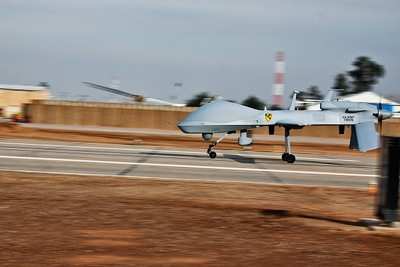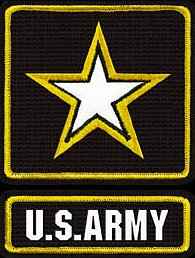Thu, Sep 09, 2010
Integration, Testing Of Hellfire Missile Aboard The Grey Eagle
UAS A 'Great Success'
Army unmanned aircraft systems officials said success was so
great with the integration and testing of the Hellfire missile
aboard the Grey Eagle UAS that the Army would begin deployment of
four weaponized systems to Afghanistan in the fall. In a Pentagon
bloggers roundtable August 25, Col. Greg Gonzalez, program manager
for Army UAS said in recent user tests at the National Training
Center, Soldiers had fired eight live fires with eight hits.

Of the eight, six aimed by the on-board laser designator were
fired directly from the Grey Eagle platform resulting in six hits.
The remaining two test fires were Hellfires launched from AH-64
Apaches which were also direct hits. "Prior to that we had also
tested the Hellfire integration at China Lake back in the fall of
2009," he said. "At that time, we had nine out of 10 hits and the
tenth one that we did miss was an extremely difficult shot of a
target moving directly below the aircraft, moving in a parallel...
a perpendicular shot."
Tim Owings, deputy program manager for Army UAS said the Army
had been testing sense-and-avoid capabilities of its UAS, such as
software variants, new capabilities, training operators, but until
recently the service hadn't been able to fly at night in national
airspace per Federal Aviation Administration restrictions. Those
restrictions have since been lifted and will help resolve the
problem that the majority of flight hours that all services are
flying today are in theater, operating with impunity. Once war
efforts die down and most of the assets are returned to the U.S.,
training will still be needed said Gonzalez.

Addressing the future of UAS, Col. Robert Sova, capability
manager for UAS, said the role of the systems in war has exceeded a
million hours and that the "work horse" of the UAS reconnaissance
inventory, the Shadow, had exceeded 500,000 hours of flight time
alone. He added the Army continues to see an increase in flying
hours. He said primary roles will still be surveillance, security,
command and control, and communications relay. He also said he
doesn't see an expansion of attack roles for the present other than
Grey Eagle but didn't close the door on the feasibility of using
smaller, lighter weapon systems in the future along with studying
the possibility of cargo UAS.
More News
Aero Linx: International Federation of Airworthiness (IFA) We aim to be the most internationally respected independent authority on the subject of Airworthiness. IFA uniquely combi>[...]
Ultrahigh Frequency (UHF) The frequency band between 300 and 3,000 MHz. The bank of radio frequencies used for military air/ground voice communications. In some instances this may >[...]
A Few Questions AND Answers To Help You Get MORE Out of ANN! 1) I forgot my password. How do I find it? 1) Easy... click here and give us your e-mail address--we'll send it to you >[...]
From 2019 (YouTube Edition): Learning To Paint Without Getting Any On Your Hands PPG's Aerospace Coatings Academy is a tool designed to teach everything one needs to know about all>[...]
Also: Sustainable Aircraft Test Put Aside, More Falcon 9 Ops, Wyoming ANG Rescue, Oreo Cookie Into Orbit Joby Aviation has reason to celebrate, recently completing its first full t>[...]
 ANN's Daily Aero-Linx (05.06.25)
ANN's Daily Aero-Linx (05.06.25) ANN's Daily Aero-Term (05.06.25): Ultrahigh Frequency (UHF)
ANN's Daily Aero-Term (05.06.25): Ultrahigh Frequency (UHF) ANN FAQ: Q&A 101
ANN FAQ: Q&A 101 Classic Aero-TV: Virtual Reality Painting--PPG Leverages Technology for Training
Classic Aero-TV: Virtual Reality Painting--PPG Leverages Technology for Training Airborne 05.02.25: Joby Crewed Milestone, Diamond Club, Canadian Pilot Insurance
Airborne 05.02.25: Joby Crewed Milestone, Diamond Club, Canadian Pilot Insurance




